Developing a successful content marketing strategy requires careful planning, thoughtful execution, and continuous optimization.
From setting clear goals and defining your target audience to crafting compelling content and measuring results, each step is meticulously designed to ensure your strategy is effective and impactful.
By following this blueprint, you will unlock the potential of content marketing and position your brand for success in the dynamic world of digital marketing.
So, Let’s begin!
From setting clear goals and defining your target audience to crafting compelling content and measuring results, each step is meticulously designed to ensure your strategy is effective and impactful.
By following this blueprint, you will unlock the potential of content marketing and position your brand for success in the dynamic world of digital marketing.
So, Let’s begin!
Table of Contents
ToggleTable of Index
- Setting the goals of a content marketing strategy
- Brand Awareness
- Lead Conversion
- Lead nurturing
- Customer service
- Strategizing for content that upsells
- Your content should bring you, evangelists
- Identifying Target Audiences and Tailoring Content
- Importance of Understanding the Target Audience
- Creating Buyer Personas
- Market Research and Audience Insights
- Here are some key strategies
- Content Audit
- USP
- Storytelling and Compelling Narratives
- The Power of Storytelling in Content Marketing
- Emotional Connection through Narratives
- Example Campaigns that Leverage Storytelling Effectively
- Incorporating Personal Anecdotes and Customer Success Stories
- Optimising Content for Search Engines and Increasing Organic Reach
- The Significance of Search Engine Optimisation (SEO)
- Conducting Keyword Research
- Utilizing Meta Tags and On-Page Optimisation Techniques
- Tools and Resources for Optimising Content
- Data Analysis and Tracking Metrics
- Importance of Data Analysis in Content Marketing
- Tracking Key Performance Metrics
- Tools for Measuring Content Performance
- Making Data-Driven Decisions for Content Optimisation
- Creating a Content Calendar and Planning Distribution
- Creating a Content Calendar and Planning Distribution
- Promoting Content and Leveraging Social Media Platforms
- Conclusion
1. Setting the goals of a content marketing strategy
Gone are the days when you only needed to regularly post on social media to get customers.
According to the Content Marketing Institute, 53% of businesses have a documented content marketing strategy, and they are flourishing in their respective niches.
Here is a guide for setting strategic goals in content marketing by NYU professor Brain Honigman. Have a look at Content Marketing Tutorial – Setting strategic goals.
According to the Content Marketing Institute, 53% of businesses have a documented content marketing strategy, and they are flourishing in their respective niches.
Here is a guide for setting strategic goals in content marketing by NYU professor Brain Honigman. Have a look at Content Marketing Tutorial – Setting strategic goals.
Even if they are sometimes competitors, their strategy targets different personas and therefore they do not clash.
You must have a content marketing strategy before a content strategy.
The purpose of the content marketing strategy is to inform the content strategy.
If you have a proper content marketing strategy, then you have to define the goals that it addresses.
A good content marketing plan will look into the planned/perceived objectives of the content strategy.
What will the content achieve? Sales, Traffic, Leads?
The content marketing strategy has to clearly state this.
Your goal is not just to do exceptional content marketing, but to grow the business through well-crafted content which requires a good content marketing strategy.
The main goal is to guide the creation of a great content strategy, but this is still broken down further.
You must have a content marketing strategy before a content strategy.
The purpose of the content marketing strategy is to inform the content strategy.
If you have a proper content marketing strategy, then you have to define the goals that it addresses.
A good content marketing plan will look into the planned/perceived objectives of the content strategy.
What will the content achieve? Sales, Traffic, Leads?
The content marketing strategy has to clearly state this.
Your goal is not just to do exceptional content marketing, but to grow the business through well-crafted content which requires a good content marketing strategy.
The main goal is to guide the creation of a great content strategy, but this is still broken down further.
You need to set goals around issues like:
- To generate more leads
- To drive sales and profits
- To get a higher ranking on Search Engines
- To push social media engagement
- To address the right personas and not just any idle browser.
Most marketers bungle up the setting goals part and will give answers such as
- My client (Boss) wants 10 blog posts this week.
- Regular blogging will increase my visibility on keyword searches.
- Readers want to see an active blog.
In broad terms, content marketing strategy goals fall under a set of broad categories, each determined by the niche.
a. Brand Awareness
Brand awareness represents the extent to which your target audience remembers and recalls your brand when faced with choices.
In the realm of content marketing, brand awareness plays a pivotal role in establishing trust, credibility, and loyalty among your customers.
Every popular brand builds strategies to create brand awareness.
Have a look here, at how Apple and Nike captured your brains with their brands.
How Apple and Nike have branded your brain | Your Brain on Money | Big Think
In the realm of content marketing, brand awareness plays a pivotal role in establishing trust, credibility, and loyalty among your customers.
Every popular brand builds strategies to create brand awareness.
Have a look here, at how Apple and Nike captured your brains with their brands.
How Apple and Nike have branded your brain | Your Brain on Money | Big Think
Building Trust and Credibility
One of the primary reasons brand awareness is essential to your content marketing strategy is the trust and credibility it helps you build.
When you consistently deliver valuable and relevant content that aligns with your brand’s values, you establish yourself as an authority and thought leader in your industry.
By becoming a reliable source of information, you foster trust and confidence in your brand’s expertise, making it easier for customers to choose you over competitors.
When you consistently deliver valuable and relevant content that aligns with your brand’s values, you establish yourself as an authority and thought leader in your industry.
By becoming a reliable source of information, you foster trust and confidence in your brand’s expertise, making it easier for customers to choose you over competitors.
Engaging Your Audience

Brand awareness is the fuel that drives engagement with your audience.
When people are aware of your brand and understand its unique value proposition, they are more likely to actively engage with your content.
This engagement can take various forms, such as sharing your articles, commenting on your blog posts, or participating in conversations on social media.
By crafting a content marketing strategy that emphasizes brand awareness, you create opportunities for meaningful interactions and cultivate a loyal community of followers.
When people are aware of your brand and understand its unique value proposition, they are more likely to actively engage with your content.
This engagement can take various forms, such as sharing your articles, commenting on your blog posts, or participating in conversations on social media.
By crafting a content marketing strategy that emphasizes brand awareness, you create opportunities for meaningful interactions and cultivate a loyal community of followers.
Creating Recognition and Recall
A strong brand awareness strategy helps you achieve recognition and recall among your target audience.
When customers are repeatedly exposed to your consistent branding elements, such as your logo, colors, and brand messaging, it reinforces their memory of your brand.
This familiarity makes it more likely for them to remember and recognize your brand when making purchasing decisions.
By ensuring your brand remains top-of-mind, you increase the chances of being considered and chosen by potential customers.
When customers are repeatedly exposed to your consistent branding elements, such as your logo, colors, and brand messaging, it reinforces their memory of your brand.
This familiarity makes it more likely for them to remember and recognize your brand when making purchasing decisions.
By ensuring your brand remains top-of-mind, you increase the chances of being considered and chosen by potential customers.
Fostering Customer Loyalty and Advocacy
Brand awareness forms the foundation for fostering customer loyalty and advocacy.
When customers have a positive experience with your brand and resonate with your values, they are more likely to become loyal patrons and advocates.
By prioritizing brand awareness in your content marketing strategy, you nurture a community of loyal customers who actively engage with and promote your content.
These loyal customers become your brand ambassadors, spreading positive word-of-mouth and helping to expand your reach organically.
When customers have a positive experience with your brand and resonate with your values, they are more likely to become loyal patrons and advocates.
By prioritizing brand awareness in your content marketing strategy, you nurture a community of loyal customers who actively engage with and promote your content.
These loyal customers become your brand ambassadors, spreading positive word-of-mouth and helping to expand your reach organically.
Setting Yourself Apart from Competitors

In today’s crowded marketplace, brand awareness is crucial for setting yourself apart from competitors.
A strong content marketing strategy that focuses on building brand awareness allows you to showcase your unique value proposition, brand story, and personality.
By creating content that aligns with your brand identity and resonates with your target audience, you establish a distinct space in your industry.
This differentiation becomes the magnet that attracts customers to choose you over others.
A strong content marketing strategy that focuses on building brand awareness allows you to showcase your unique value proposition, brand story, and personality.
By creating content that aligns with your brand identity and resonates with your target audience, you establish a distinct space in your industry.
This differentiation becomes the magnet that attracts customers to choose you over others.
Expanding Your Reach and Attracting New Customers
Brand awareness not only benefits existing customers but also plays a vital role in attracting new ones.
When potential customers encounter your brand’s content consistently across various channels, it piques their interest and curiosity.
By prioritizing brand awareness in your content marketing strategy, you expand your reach and attract new customers who are eager to explore what your brand has to offer.
This lays the foundation for building lasting relationships and driving business growth.
When potential customers encounter your brand’s content consistently across various channels, it piques their interest and curiosity.
By prioritizing brand awareness in your content marketing strategy, you expand your reach and attract new customers who are eager to explore what your brand has to offer.
This lays the foundation for building lasting relationships and driving business growth.
b. Lead Conversion –
Most landing pages are created with this in mind.
The content there has to be direct, and catchy.
That is why lead conversion is one of the goals of a great content marketing strategy.
As you know, it is a crucial component of any successful marketing strategy, as leads are the lifeblood of business growth.
The Role of Content Marketing Strategy in Lead Generation
The content there has to be direct, and catchy.
That is why lead conversion is one of the goals of a great content marketing strategy.
As you know, it is a crucial component of any successful marketing strategy, as leads are the lifeblood of business growth.
The Role of Content Marketing Strategy in Lead Generation
Attracting Targeted Traffic
An effective content marketing strategy helps businesses attract targeted traffic to their digital platforms.
By creating high-quality content that addresses the needs, pain points, and interests of your target audience, you can position yourself as a valuable resource.
This attracts individuals who are actively seeking information and solutions related to your industry or niche.
By providing relevant and engaging content, you not only increase website traffic but also attract prospects who are more likely to convert into leads.
By creating high-quality content that addresses the needs, pain points, and interests of your target audience, you can position yourself as a valuable resource.
This attracts individuals who are actively seeking information and solutions related to your industry or niche.
By providing relevant and engaging content, you not only increase website traffic but also attract prospects who are more likely to convert into leads.
Building Trust and Credibility
Trust and credibility are paramount in lead generation.
A well-crafted content marketing strategy allows you to establish your brand as a trusted authority in your field.
By consistently delivering valuable, accurate, and insightful content, you demonstrate your expertise and build credibility with your audience.
When prospects trust your brand, they are more willing to share their contact information and engage in further interactions, paving the way for lead generation.
A well-crafted content marketing strategy allows you to establish your brand as a trusted authority in your field.
By consistently delivering valuable, accurate, and insightful content, you demonstrate your expertise and build credibility with your audience.
When prospects trust your brand, they are more willing to share their contact information and engage in further interactions, paving the way for lead generation.
Educating and Engaging Prospects
Content marketing serves as a powerful tool for educating and engaging prospects.
By creating informative blog posts, e-books, videos, and other forms of content, you provide valuable knowledge and insights to your target audience.
This helps them understand their challenges, learn about potential solutions, and evaluate your offerings.
When prospects find your content valuable, they are more likely to stay engaged, explore additional resources, and ultimately provide their contact information to access exclusive content or offers.
By creating informative blog posts, e-books, videos, and other forms of content, you provide valuable knowledge and insights to your target audience.
This helps them understand their challenges, learn about potential solutions, and evaluate your offerings.
When prospects find your content valuable, they are more likely to stay engaged, explore additional resources, and ultimately provide their contact information to access exclusive content or offers.
Lead Capture through Opt-in Forms and CTAs
An effective content marketing strategy includes strategic placement of lead capture elements such as opt-in forms, calls-to-action (CTAs), and landing pages.
These conversion-focused elements encourage prospects to take the next step in their buyer’s journey and provide their contact information.
By aligning the placement of these lead capture elements with the relevant content, you increase the likelihood of lead generation.
Your CTA can be as simple as we have because it leads to no confusion for the target audience. Hence, proves to be an effective CTA for us.
These conversion-focused elements encourage prospects to take the next step in their buyer’s journey and provide their contact information.
By aligning the placement of these lead capture elements with the relevant content, you increase the likelihood of lead generation.
Your CTA can be as simple as we have because it leads to no confusion for the target audience. Hence, proves to be an effective CTA for us.
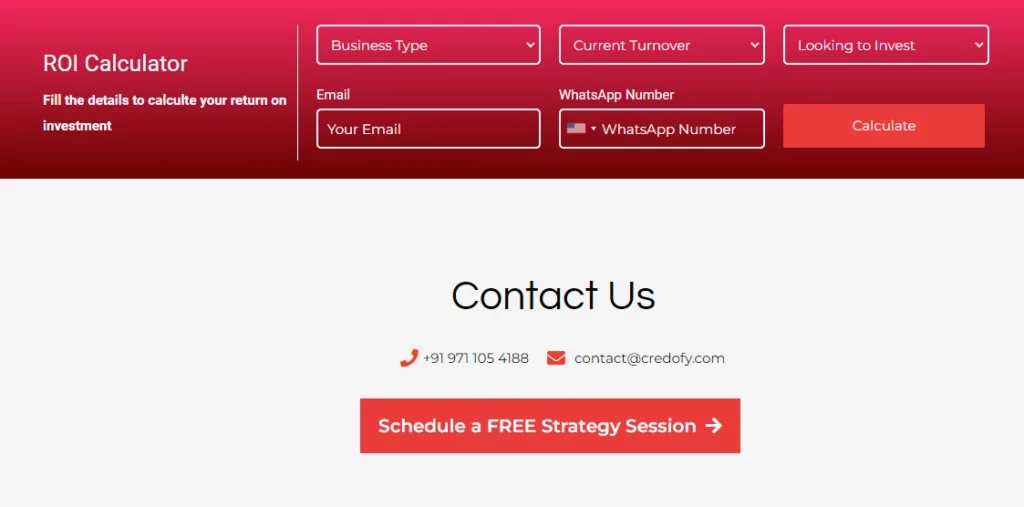
Nurturing Leads with Relevant Content
A content marketing strategy goes beyond just attracting leads; it focuses on nurturing and engaging them through targeted content.
By utilizing marketing automation tools and email marketing campaigns, you can deliver personalized and relevant content to your leads at various stages of the buyer’s journey.
This nurturing process helps build relationships, foster trust, and guide leads toward making a purchasing decision.
By utilizing marketing automation tools and email marketing campaigns, you can deliver personalized and relevant content to your leads at various stages of the buyer’s journey.
This nurturing process helps build relationships, foster trust, and guide leads toward making a purchasing decision.
Measuring and Optimizing Results
An essential aspect of any content marketing strategy is the ability to measure and optimize your results.
By analyzing key metrics such as website traffic, conversion rates, and lead-to-customer conversion rates, you gain insights into the effectiveness of your content marketing efforts.
These insights allow you to make data-driven decisions, refine your strategy, and allocate resources to the most effective content channels.
By continually monitoring and optimizing your content marketing strategy, you can maximize lead generation and achieve better ROI.
By analyzing key metrics such as website traffic, conversion rates, and lead-to-customer conversion rates, you gain insights into the effectiveness of your content marketing efforts.
These insights allow you to make data-driven decisions, refine your strategy, and allocate resources to the most effective content channels.
By continually monitoring and optimizing your content marketing strategy, you can maximize lead generation and achieve better ROI.
c. Lead nurturing
How do you keep your customers interested in your products or services?
You must come up with a strategy for emails, newsletters, and other forms of content that will keep them loyal to your business.
Without a clear strategy, you may create content that will alienate them from you.
Lead nurturing is the process of building and maintaining relationships with your leads, from the moment they express interest in your offerings to the point of conversion.
It involves delivering relevant and personalized content to educate, engage, and guide leads throughout their buying journey.
Lead nurturing ensures that your leads receive the right information at the right time, increasing the chances of conversion and fostering long-term customer loyalty.
The Role of Content Marketing Strategy in Lead Nurturing
You must come up with a strategy for emails, newsletters, and other forms of content that will keep them loyal to your business.
Without a clear strategy, you may create content that will alienate them from you.
Lead nurturing is the process of building and maintaining relationships with your leads, from the moment they express interest in your offerings to the point of conversion.
It involves delivering relevant and personalized content to educate, engage, and guide leads throughout their buying journey.
Lead nurturing ensures that your leads receive the right information at the right time, increasing the chances of conversion and fostering long-term customer loyalty.
The Role of Content Marketing Strategy in Lead Nurturing
Delivering Targeted and Relevant Content
A well-defined content marketing strategy enables you to deliver targeted and relevant content to your leads.
By understanding their needs, pain points, and interests, you can create content that addresses their specific challenges and provides valuable solutions.
This personalized approach not only establishes your credibility and expertise but also keeps your leads engaged and interested in your brand.
By delivering the content they seek, you demonstrate your commitment to meeting their needs, fostering trust and loyalty.
By understanding their needs, pain points, and interests, you can create content that addresses their specific challenges and provides valuable solutions.
This personalized approach not only establishes your credibility and expertise but also keeps your leads engaged and interested in your brand.
By delivering the content they seek, you demonstrate your commitment to meeting their needs, fostering trust and loyalty.
Guiding Leads through the Buyer's Journey
A content marketing strategy plays a vital role in guiding leads through the different stages of the buyer’s journey.
From the initial awareness stage to the final decision-making stage, your content can provide the information and support needed at each step.
By delivering targeted content that addresses their specific concerns and motivations, you can nurture leads and help them move closer to making a purchasing decision.
Whether it’s through informative blog posts, case studies, or product comparisons, your content guides lead toward understanding the benefits of your offerings and how they can fulfill their needs.
Here’s a complete guide on “How to Create a Great Buyer’s Journey (For Beginners)”
From the initial awareness stage to the final decision-making stage, your content can provide the information and support needed at each step.
By delivering targeted content that addresses their specific concerns and motivations, you can nurture leads and help them move closer to making a purchasing decision.
Whether it’s through informative blog posts, case studies, or product comparisons, your content guides lead toward understanding the benefits of your offerings and how they can fulfill their needs.
Here’s a complete guide on “How to Create a Great Buyer’s Journey (For Beginners)”
Personalization and Segmentation
A successful content marketing strategy incorporates personalization and segmentation to enhance lead nurturing efforts.
By understanding the unique characteristics and preferences of your leads, you can tailor your content to their specific needs.
Through email marketing and marketing automation tools, you can segment your leads based on demographics, behaviors, or interests and deliver content that resonates with them on a deeper level.
This personalization creates a more individualized experience, increasing engagement and building stronger connections with your leads.
By understanding the unique characteristics and preferences of your leads, you can tailor your content to their specific needs.
Through email marketing and marketing automation tools, you can segment your leads based on demographics, behaviors, or interests and deliver content that resonates with them on a deeper level.
This personalization creates a more individualized experience, increasing engagement and building stronger connections with your leads.
Building Relationships and Fostering Engagement
Lead nurturing is all about building relationships and fostering engagement with your leads.
Through your content marketing strategy, you can create opportunities for interaction and dialogue.
Encourage your leads to engage with your content through comments, social media shares, or discussions on your website.
By actively participating in these conversations, responding to their queries, and offering additional insights, you create a sense of community and demonstrate your commitment to their success.
Building these relationships increases brand loyalty and positions you as a trusted partner.
Through your content marketing strategy, you can create opportunities for interaction and dialogue.
Encourage your leads to engage with your content through comments, social media shares, or discussions on your website.
By actively participating in these conversations, responding to their queries, and offering additional insights, you create a sense of community and demonstrate your commitment to their success.
Building these relationships increases brand loyalty and positions you as a trusted partner.
d. Customer service
Many companies do not plan for content for customer services.
You call or email a company, and get three different answers to the same question.
Good customer service should be reading from the same script, and this means creating a strategy, based on the business, to address specific questions.
This part is progressive as you get more questions and conversations from your customers.
One powerful tool that can optimize customer service is a well-crafted content marketing strategy.
You call or email a company, and get three different answers to the same question.
Good customer service should be reading from the same script, and this means creating a strategy, based on the business, to address specific questions.
This part is progressive as you get more questions and conversations from your customers.
One powerful tool that can optimize customer service is a well-crafted content marketing strategy.
Educating Customers
One way a content marketing strategy enhances customer service is by educating customers.
By creating informative and educational content, you can provide valuable insights, tips, and guidance to address common questions or challenges that your customers may face.
This educational content empowers customers, enabling them to make informed decisions and get the most out of your products or services.
By educating customers, you proactively address their needs, reduce support inquiries, and create a positive customer experience.
By creating informative and educational content, you can provide valuable insights, tips, and guidance to address common questions or challenges that your customers may face.
This educational content empowers customers, enabling them to make informed decisions and get the most out of your products or services.
By educating customers, you proactively address their needs, reduce support inquiries, and create a positive customer experience.
Self-Service Resources
A well-crafted content marketing strategy includes the creation of self-service resources.
These resources can take the form of knowledge bases, FAQs, tutorials, or step-by-step guides.
By providing comprehensive self-service content, you empower customers to find answers and solutions to their inquiries independently.
This not only saves their time but also reduces the burden on your support team.
Customers appreciate the convenience of self-service resources, which leads to a positive perception of your brand and an improved customer service experience.
These resources can take the form of knowledge bases, FAQs, tutorials, or step-by-step guides.
By providing comprehensive self-service content, you empower customers to find answers and solutions to their inquiries independently.
This not only saves their time but also reduces the burden on your support team.
Customers appreciate the convenience of self-service resources, which leads to a positive perception of your brand and an improved customer service experience.
Proactive Problem Solving
A proactive approach to customer service is essential for optimizing the customer experience.
A content marketing strategy allows you to address potential issues or concerns before they arise.
By creating content that anticipates customer needs and provides proactive solutions, you demonstrate your commitment to their satisfaction.
This proactive problem-solving approach not only saves time for both parties but also showcases your dedication to going above and beyond in delivering exceptional customer service.
A content marketing strategy allows you to address potential issues or concerns before they arise.
By creating content that anticipates customer needs and provides proactive solutions, you demonstrate your commitment to their satisfaction.
This proactive problem-solving approach not only saves time for both parties but also showcases your dedication to going above and beyond in delivering exceptional customer service.
Personalized Communication
Effective customer service relies on personalized communication.
A content marketing strategy enables you to segment your audience and tailor your content to specific customer groups.
By delivering personalized content that addresses their unique needs and preferences, you make customers feel seen and understood.
Whether through email campaigns, blog posts, or social media interactions, personalized communication enhances the customer service experience by fostering a sense of individual attention and care.
A content marketing strategy enables you to segment your audience and tailor your content to specific customer groups.
By delivering personalized content that addresses their unique needs and preferences, you make customers feel seen and understood.
Whether through email campaigns, blog posts, or social media interactions, personalized communication enhances the customer service experience by fostering a sense of individual attention and care.
Addressing Customer Feedback and Concerns
A content marketing strategy provides a platform for addressing customer feedback and concerns.
By actively monitoring customer comments, reviews, and inquiries, you can identify common pain points and areas for improvement.
You can then create content that directly addresses these concerns, provides solutions, and clarifies any misconceptions.
This proactive approach to addressing customer feedback not only shows your attentiveness but also allows you to continuously improve your customer service and strengthen customer relationships.
By actively monitoring customer comments, reviews, and inquiries, you can identify common pain points and areas for improvement.
You can then create content that directly addresses these concerns, provides solutions, and clarifies any misconceptions.
This proactive approach to addressing customer feedback not only shows your attentiveness but also allows you to continuously improve your customer service and strengthen customer relationships.
e. Strategizing for content that upsells
If you have complementary products, then upselling is one way of getting customers to buy more.
An example of upselling is offering a discount should the customer buy a complementary product.
If the product is a baseball, then perhaps selling them a pair of baseball gloves can be explored; or a baseball bat.
A soccer ball with a pair of soccer boots. The possibilities are as many as the products or services that you offer.
An example of upselling is offering a discount should the customer buy a complementary product.
If the product is a baseball, then perhaps selling them a pair of baseball gloves can be explored; or a baseball bat.
A soccer ball with a pair of soccer boots. The possibilities are as many as the products or services that you offer.

f. Your content should bring you, evangelists,
From the moment you start planning for content, you want it to be shared to bring more customers.
Sharing brings in more customers than search engines.
This is why creating shareable content is crucial.
When creating your content marketing strategy, plan for content that will encourage sharing.
Although these are basic categories, each content marketing strategy is different based on the business niche.
Sharing brings in more customers than search engines.
This is why creating shareable content is crucial.
When creating your content marketing strategy, plan for content that will encourage sharing.
Although these are basic categories, each content marketing strategy is different based on the business niche.
Let us take a look at our two clients John and Mark whom we discussed in our website discovery blog.
John,
He is a contractor, who needs to attract investors into commercial property construction. The goals that he would be targeting will go as follows:
He is a contractor, who needs to attract investors into commercial property construction. The goals that he would be targeting will go as follows:
- Creation of CAD architectural plans for the buildings and offering them to prospects who show interest.
- Specifications and clauses will govern the partnerships, whether corporate or individual investors.
- Videos and images to be prepared for marketing
- What prices/costs are expected
- Case studies of construction as a good avenue of inspection
- A company newsletter for showing the prowess of the company with time.
Mark,
He is a school proprietor and wants parents to bring in children for vacation classes that are different, in that they are structured around learning by playing.
The goals his content marketing strategy should look at are as follows:
Related Article: 9 Steps for an Ultimate Content Strategy
He is a school proprietor and wants parents to bring in children for vacation classes that are different, in that they are structured around learning by playing.
The goals his content marketing strategy should look at are as follows:
- Creation of stories around children who study at the school.
- Creation of a strong video posting presence on social media.
- Creating content that will be more tangible to parents as opposed to the children.
- Creation of a community on social media.
- Creation of a strong school-to-home relationship through content.
- Content that inspires the children to perform better.
- Content that is generated by teachers, and how it will be arranged by each teacher for easy navigation.
Related Article: 9 Steps for an Ultimate Content Strategy
2. Identifying Target Audiences and Tailoring Content

Whether you are working in a B2B company or B2C company, understanding your target audience is crucial for crafting effective strategies that resonate with them.
By identifying your target audience and tailoring your content accordingly, you can enhance engagement, build relationships, and drive meaningful results.
Let’s explore the essential steps to identify and cater to your audience through content marketing strategies.
By identifying your target audience and tailoring your content accordingly, you can enhance engagement, build relationships, and drive meaningful results.
Let’s explore the essential steps to identify and cater to your audience through content marketing strategies.
a. Importance of Understanding the Target Audience
To create impactful content, you must have a deep understanding of your target audience.
By gaining insights into their demographics, preferences, and pain points, you can align your content with their needs and interests.
This understanding allows you to:
By gaining insights into their demographics, preferences, and pain points, you can align your content with their needs and interests.
This understanding allows you to:
Personalize Content:
Tailor your content to address specific audience segments, making it more relevant and relatable.
Connect Emotionally:
Craft messages that resonate with your audience’s aspirations, challenges, and values.
Build Trust:
By understanding your audience’s concerns, you can provide valuable solutions and establish trust.
b. Creating Buyer Personas
Creating buyer personas is a powerful technique for defining your target audience in a more detailed and humanized manner.
Here’s how to create effective buyer personas:
Here’s how to create effective buyer personas:
Research and Data:
Gather demographic information, conduct surveys, and analyze customer feedback to collect relevant data.
Identify Patterns:
Look for common characteristics, behaviors, and motivations among your audience members.
Develop Personas:
Create fictional profiles that represent distinct segments of your target audience, including their goals, challenges, and preferences.
Build your user persona before building any strategy for them. Here is a piece of our user persona.
Build your user persona before building any strategy for them. Here is a piece of our user persona.
c. Market Research and Audience Insights
To refine your content marketing strategies, thorough market research and audience insights are essential.
Here’s how to gain valuable information about your audience:
Here’s how to gain valuable information about your audience:
Surveys and Interviews:
Conduct surveys and interviews to gather direct feedback and insights from your target audience.
Social Media Listening:
Monitor conversations on social media platforms to understand what topics and trends resonate with your audience.
Analyze Website Analytics:
Study user behavior on your website to gain insights into their preferences, interests, and engagement levels.
d. Here are some key strategies:
Tailoring Content to Address Specific Needs
Once you have identified your target audiences, it’s time to tailor your content to address their specific needs.
By aligning your content with their interests and challenges, you can provide valuable solutions and insights.
Whether it’s through blog posts, articles, videos, or social media content, your content marketing strategy should focus on creating content that resonates with your audience and offers relevant and actionable information.
By addressing their pain points and providing solutions, you position yourself as a trusted resource and increase the likelihood of engagement and conversion.
By aligning your content with their interests and challenges, you can provide valuable solutions and insights.
Whether it’s through blog posts, articles, videos, or social media content, your content marketing strategy should focus on creating content that resonates with your audience and offers relevant and actionable information.
By addressing their pain points and providing solutions, you position yourself as a trusted resource and increase the likelihood of engagement and conversion.
Crafting the Right Tone and Voice
In addition to addressing specific needs, tailoring your content involves crafting the right tone and voice.
The tone and voice of your content should align with your target audience’s preferences and reflect your brand identity.
Are they looking for a friendly and conversational tone, or do they prefer a more formal and professional approach?
Understanding your audience’s expectations allows you to adapt your content’s tone and voice to build a connection and establish rapport.
By speaking their language, you create a sense of relatability and authenticity that strengthens their trust in your brand.
The tone and voice of your content should align with your target audience’s preferences and reflect your brand identity.
Are they looking for a friendly and conversational tone, or do they prefer a more formal and professional approach?
Understanding your audience’s expectations allows you to adapt your content’s tone and voice to build a connection and establish rapport.
By speaking their language, you create a sense of relatability and authenticity that strengthens their trust in your brand.
Choosing the Right Channels
Identifying your target audiences is also about understanding the channels they frequent and tailoring your content distribution strategy accordingly.
Research and analyze the platforms your audience prefers, such as social media networks, industry-specific forums, or popular blogs.
By strategically selecting the right channels, you can ensure that your content reaches your target audiences where they are most likely to engage with it.
This approach increases the visibility and impact of your content, maximizing your chances of connecting with your intended audience.
Research and analyze the platforms your audience prefers, such as social media networks, industry-specific forums, or popular blogs.
By strategically selecting the right channels, you can ensure that your content reaches your target audiences where they are most likely to engage with it.
This approach increases the visibility and impact of your content, maximizing your chances of connecting with your intended audience.
Utilizing Data and Analytics
Data and analytics play a vital role in tailoring your content effectively.
Through various tools and platforms, you can gather valuable insights into audience engagement, behavior, and preferences.
These insights allow you to refine your content marketing strategy by focusing on what resonates most with your target audiences.
By analyzing metrics such as page views, click-through rates, and social media engagement, you can make data-driven decisions to optimize your content for better results.
Through various tools and platforms, you can gather valuable insights into audience engagement, behavior, and preferences.
These insights allow you to refine your content marketing strategy by focusing on what resonates most with your target audiences.
By analyzing metrics such as page views, click-through rates, and social media engagement, you can make data-driven decisions to optimize your content for better results.
Embracing Personalization
Personalization is a key aspect of tailoring content to your target audiences.
By understanding your audience segments on a more individual level, you can create personalized experiences that speak directly to their specific needs and preferences.
This can include using their names in email marketing campaigns, providing customized recommendations based on their past behavior, or offering exclusive content tailored to their interests.
The more personalized your content, the stronger the connection you can build with your audience.
By understanding your audience segments on a more individual level, you can create personalized experiences that speak directly to their specific needs and preferences.
This can include using their names in email marketing campaigns, providing customized recommendations based on their past behavior, or offering exclusive content tailored to their interests.
The more personalized your content, the stronger the connection you can build with your audience.
Continuous Refinement and Optimization
Tailoring your content to your target audiences is an ongoing process that requires continuous refinement and optimization.
Monitor the performance of your content regularly, paying attention to feedback and engagement metrics.
Identify trends, patterns, and areas for improvement.
By actively listening to your audience and being responsive to their feedback, you can adjust your content marketing strategy to better serve their needs and preferences.
Monitor the performance of your content regularly, paying attention to feedback and engagement metrics.
Identify trends, patterns, and areas for improvement.
By actively listening to your audience and being responsive to their feedback, you can adjust your content marketing strategy to better serve their needs and preferences.
3. Content Audit
The content audit is one monster that content marketers fear; it is a time-consuming process and is done once or twice a year.
Sadly, only a small portion of content writers do a content audit. Most times they create content and forget about it.
In years to come, the content is outdated and irrelevant and just take up space on their website or blog.
A good content audit deals with such information, so the content is updated, or completely removed and replaced.
A content audit will guide your content marketing strategy since it will give insights into where content performance is excellent and where it is failing.
This is where the determination of Key Performance Indicators is important.
They are the ones that will aid you in knowing how well your content is performing.
A lot of data has to be collected at this stage and then analyzed.
The data such as the number of shares, backlinks, content date, last update, metadata, titles, and more have to be painstakingly collected and analyzed.
There are tools that you can use to automatically collect such data and analyze it, otherwise using a spreadsheet will be tedious and time-consuming.
Data shows that WordPress makes up about 33% of the websites in the world, but only 40% of them are updated.
A content audit is crucial, so you do not miss out.
Here’s a step-by-step process to do an SEO Content Audit by Ahrefs
Sadly, only a small portion of content writers do a content audit. Most times they create content and forget about it.
In years to come, the content is outdated and irrelevant and just take up space on their website or blog.
A good content audit deals with such information, so the content is updated, or completely removed and replaced.
A content audit will guide your content marketing strategy since it will give insights into where content performance is excellent and where it is failing.
This is where the determination of Key Performance Indicators is important.
They are the ones that will aid you in knowing how well your content is performing.
A lot of data has to be collected at this stage and then analyzed.
The data such as the number of shares, backlinks, content date, last update, metadata, titles, and more have to be painstakingly collected and analyzed.
There are tools that you can use to automatically collect such data and analyze it, otherwise using a spreadsheet will be tedious and time-consuming.
Data shows that WordPress makes up about 33% of the websites in the world, but only 40% of them are updated.
A content audit is crucial, so you do not miss out.
Here’s a step-by-step process to do an SEO Content Audit by Ahrefs
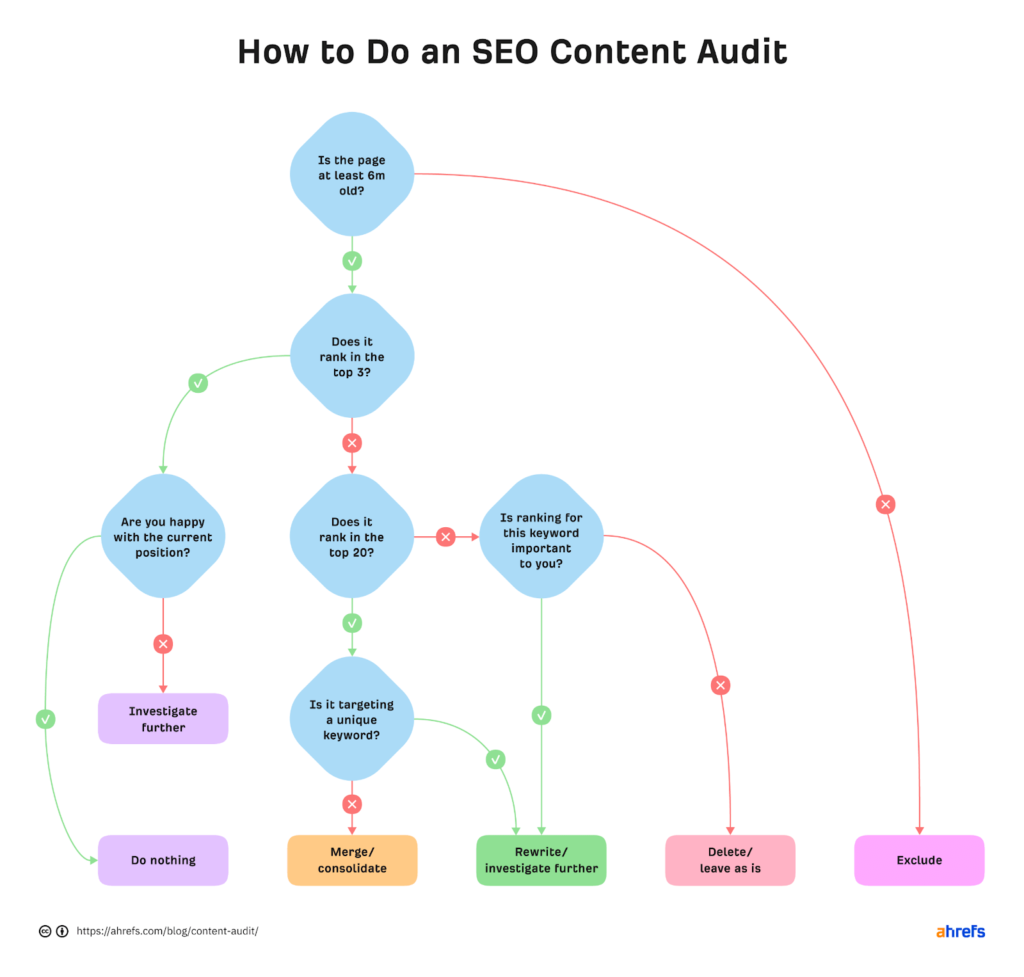
4. USP
First and foremost, what exactly is a USP?
Your USP is the distinctive factor that sets your product, service, or brand apart from others in the market.
It defines what makes you unique and why customers should choose you over your competitors.
One of the primary reasons why having a strong USP is vital in content marketing strategies is that it helps you differentiate yourself from the competition.
With countless businesses offering similar products or services, it’s essential to and communicate why you’re different and why customers should choose you.
Your USP gives you a competitive edge, making it easier for your target audience to understand why they should engage with your content and, ultimately, your brand.
Furthermore, a compelling USP helps to build brand loyalty and customer trust. When you communicate what sets you apart, you establish a unique identity in the minds of your audience.
They begin to associate your brand with specific qualities or benefits that resonate with them.
This emotional connection fosters trust and loyalty, as customers feel they have found something that aligns with their values or solves their problems.
Your USP should be an integral part of your content marketing strategy because it guides the creation of valuable and relevant content.
Your USP is the distinctive factor that sets your product, service, or brand apart from others in the market.
It defines what makes you unique and why customers should choose you over your competitors.
One of the primary reasons why having a strong USP is vital in content marketing strategies is that it helps you differentiate yourself from the competition.
With countless businesses offering similar products or services, it’s essential to and communicate why you’re different and why customers should choose you.
Your USP gives you a competitive edge, making it easier for your target audience to understand why they should engage with your content and, ultimately, your brand.
Furthermore, a compelling USP helps to build brand loyalty and customer trust. When you communicate what sets you apart, you establish a unique identity in the minds of your audience.
They begin to associate your brand with specific qualities or benefits that resonate with them.
This emotional connection fosters trust and loyalty, as customers feel they have found something that aligns with their values or solves their problems.
Your USP should be an integral part of your content marketing strategy because it guides the creation of valuable and relevant content.
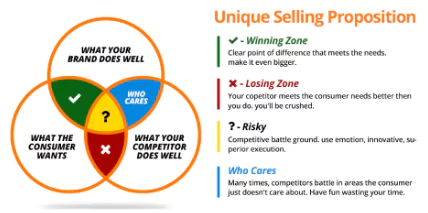
By understanding what makes you unique, you can tailor your content to address the specific needs, pain points, or desires of your target audience.
This targeted approach ensures that your content is not only engaging but also resonates deeply with your ideal customers.
When crafting your content, remember to integrate your USP in a way that’s authentic and meaningful.
Don’t simply use it as a marketing gimmick.
Instead, infuse it into the very fabric of your content, making it an intrinsic part of your brand’s story and values.
This targeted approach ensures that your content is not only engaging but also resonates deeply with your ideal customers.
When crafting your content, remember to integrate your USP in a way that’s authentic and meaningful.
Don’t simply use it as a marketing gimmick.
Instead, infuse it into the very fabric of your content, making it an intrinsic part of your brand’s story and values.
5. Storytelling and Compelling Narratives
In the world of content marketing, storytelling has emerged as a powerful tool to captivate audiences and create meaningful connections.
By weaving narratives into your content, you can evoke emotions, engage readers, and leave a lasting impact.
In 2019, Forbes published an article mentioning 3 reasons why brand storytelling is the future of marketing.
That’s,
Creating a brand story will help you to stay unique, beat your competitors, build your community and earn revenue by making an emotional connection with your target audience.
Related article:
https://www.forbes.com/sites/celinnedacosta/2019/01/31/3-reasons-why-brand-storytelling-is-the-future-of-marketing/?sh=5d36e96155ff
Let’s dive a bit deeper into the insights of storytelling and how you can leverage it to enhance your content marketing strategies.
By weaving narratives into your content, you can evoke emotions, engage readers, and leave a lasting impact.
In 2019, Forbes published an article mentioning 3 reasons why brand storytelling is the future of marketing.
That’s,
Creating a brand story will help you to stay unique, beat your competitors, build your community and earn revenue by making an emotional connection with your target audience.
Related article:
https://www.forbes.com/sites/celinnedacosta/2019/01/31/3-reasons-why-brand-storytelling-is-the-future-of-marketing/?sh=5d36e96155ff
Let’s dive a bit deeper into the insights of storytelling and how you can leverage it to enhance your content marketing strategies.
a. The Power of Storytelling in Content Marketing
Storytelling is an age-old tradition that resonates with people on a fundamental level. In the context of content marketing, storytelling offers several advantages:
Engaging and Memorable:
Stories have a unique ability to capture attention and leave a lasting impression in the minds of your audience.
Emotional Connection:
Stories tap into emotions, allowing you to forge a deeper connection with your readers.
Relatability and Relevance:
Well-crafted stories can relate to the experiences, challenges, and aspirations of your target audience.
b. Emotional Connection through Narratives
Emotions play a significant role in decision-making processes.
By infusing emotions into your content narratives, you can evoke a range of feelings and establish a deeper bond with your audience.
Here’s how to create an emotional connection:
By infusing emotions into your content narratives, you can evoke a range of feelings and establish a deeper bond with your audience.
Here’s how to create an emotional connection:
Identify Core Emotions:
Understand the primary emotions you want to evoke in your audience, such as joy, empathy, inspiration, or even a sense of urgency.
Authenticity and Vulnerability:
Share authentic stories that reveal your brand’s values, struggles, or successes, fostering a sense of relatability.
Visual and Descriptive Language:
Paint vivid pictures with words, allowing readers to visualize and emotionally engage with your content.
c. Example Campaigns that Leverage Storytelling Effectively
Let’s explore real-world examples of content marketing campaigns that have effectively leveraged storytelling to achieve their goals:
Dove's "Real Beauty":
Look how Dove challenges world beauty standards with their storytelling campaign.
By showcasing real women with diverse body types and focusing on inner beauty, Dove’s campaign won millions of hearts and build powerful emotional connections.
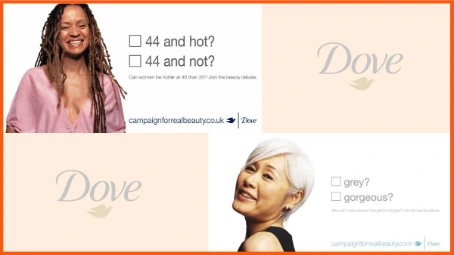
They were inspired Coco-Cola’s involvement of the target audience in their “Share a Coke” campaign.
Therefore, this time Dove involved their target audience to be a part of their campaign.
Therefore, this time Dove involved their target audience to be a part of their campaign.

Nike's "Just Do It":
Words can act as a powerful weapon. Nike proved this during their 30th-anniversary campaign.

Their campaigns always inspire individuals to overcome challenges and push their limits, using powerful narratives that emphasize determination and perseverance.

Patagonia's "Worn Wear":
Focusing on world issues Patagonia always resonates with its target audience via its effective content marketing strategies.

The “Worn Wear” campaign tells stories of well-loved Patagonia clothing items and their journeys, promoting sustainability and highlighting the value of long-lasting products.

d. Incorporating Personal Anecdotes and Customer Success Stories
Personal anecdotes and customer success stories humanize your brand and create a sense of trust and authenticity.
Here’s how to incorporate them effectively:
Here’s how to incorporate them effectively:
Customer Testimonials:
Share stories of satisfied customers, detailing their challenges, how your product or service helped them, and the outcomes they achieved.
As we mentioned the comments and feedback of our happy clients on our well-researched website.
As we mentioned the comments and feedback of our happy clients on our well-researched website.

Founder's Story:
Narrate the journey of your brand’s founder, highlighting their passion, struggles, and vision. This personal touch can resonate with your audience and create a connection.
User-Generated Content:
Encourage your audience to share their experiences and stories related to your brand. This fosters engagement and community building.
Having experience in website research and strategy building field, you can probably get our help in understanding “why most of the websites fail.”
We surveyed this issue and analyzed that most website designing companies face the same issue.
Hence, decided to mention the common problem zone with an expert solution to that on our website page.
Having experience in website research and strategy building field, you can probably get our help in understanding “why most of the websites fail.”
We surveyed this issue and analyzed that most website designing companies face the same issue.
Hence, decided to mention the common problem zone with an expert solution to that on our website page.

6. Optimising Content for Search Engines and Increasing Organic Reach
In the realm of content marketing, creating high-quality content is only half the battle.
To maximize your organic reach and ensure that your content gets discovered by your target audience, it’s essential to optimise it for search engines.
Let’s explore the art of content optimisation and how it can elevate your marketing strategies.
To maximize your organic reach and ensure that your content gets discovered by your target audience, it’s essential to optimise it for search engines.
Let’s explore the art of content optimisation and how it can elevate your marketing strategies.
a. The Significance of Search Engine Optimisation (SEO)
Search engine optimisation (SEO) is the practice of improving your website’s visibility on search engine result pages (SERPs) through organic (non-paid) means.
Here’s why SEO is crucial for content marketing success:
Here’s why SEO is crucial for content marketing success:
Increased Organic Traffic:
By optimising your content, you can rank higher on search engine results, attracting more organic traffic to your website.
Targeted Audience Reach:
SEO enables you to align your content with the search intent of your target audience, ensuring it reaches the right people.
Long-Term Visibility:
Well-optimised content can maintain its visibility on search engines for an extended period, providing ongoing exposure.
b. Conducting Keyword Research
For building the foundation of SEO, you need to understand the game of keywords.
Conducting thorough keyword research allows you to understand the search terms your audience uses and optimise your content accordingly.
Here’s how to conduct effective keyword research:
Conducting thorough keyword research allows you to understand the search terms your audience uses and optimise your content accordingly.
Here’s how to conduct effective keyword research:
Identify Relevant Topics:
Begin by brainstorming topics related to your content and target audience. These topics will form the basis for your keyword research.
Keyword Tools:
Utilize keyword research tools such as Google Keyword Planner, SEMrush, or Ahrefs to identify relevant keywords, search volume, and competition levels.
Long-Tail Keywords:
Focus on long-tail keywords (more specific phrases) that align closely with your content and have lower competition. These keywords often have higher conversion potential.

c. Utilizing Meta Tags and On-Page Optimisation Techniques
Once you’ve identified your target keywords, it’s time to optimise your content on-page to enhance its search engine visibility.
Here are essential on-page optimisation techniques:
Here are essential on-page optimisation techniques:
Meta Title and Description:
Craft compelling meta titles and descriptions that include your target keywords and entice searchers to click on your content in the search results.
Header Tags:
Utilize header tags (H1, H2, H3, etc.) to structure your content and highlight important sections. Incorporate keywords naturally within these headings.
URL Optimisation:
Optimise your URL structure to be concise, descriptive, and include relevant keywords.
d. Tools and Resources for Optimising Content
A wide range of tools and resources can aid you in optimising your content effectively.
Here are some valuable resources to explore:
Here are some valuable resources to explore:
- Google Search Console: This free tool provides insights into your website’s performance on Google, including search impressions, clicks, and rankings. It also highlights technical issues that may impact your SEO.
- Yoast SEO: A popular WordPress plugin that offers on-page optimisation guidance, including keyword analysis, readability checks, and content structure suggestions.
7. Data Analysis and Tracking Metrics
To excel in the realm of content marketing, it’s crucial to have a data-driven approach.
By analyzing relevant data and tracking key metrics, you can gain valuable insights and optimise your content strategy for maximum impact.
Let’s delve into the world of data analysis and tracking metrics to unlock your content marketing potential.
By analyzing relevant data and tracking key metrics, you can gain valuable insights and optimise your content strategy for maximum impact.
Let’s delve into the world of data analysis and tracking metrics to unlock your content marketing potential.
a. Importance of Data Analysis in Content Marketing
Data analysis is the process of examining raw data to uncover patterns, draw conclusions, and make informed decisions.
In the context of content marketing, data analysis is essential for several reasons:
In the context of content marketing, data analysis is essential for several reasons:
Understanding Audience Behavior:
Analyzing data allows you to gain insights into how your audience interacts with your content, enabling you to create more targeted and engaging campaigns.
Identifying Content Performance:
By analyzing metrics, you can determine which content pieces are performing well and resonate with your audience. This knowledge helps you refine your content creation strategy.
Optimising ROI:
Data analysis enables you to assess the return on investment (ROI) of your content marketing efforts, identify areas of improvement, and allocate resources effectively.
b. Tracking Key Performance Metrics
To measure the success of your content marketing initiatives, you need to track key performance metrics.
These metrics provide quantifiable data that reflects your content’s performance.
Here are some essential metrics to track:
These metrics provide quantifiable data that reflects your content’s performance.
Here are some essential metrics to track:
Website Traffic:
Monitor the number of visitors to your website to gauge the overall reach and visibility of your content.
Bounce Rate:
The bounce rate measures the percentage of visitors who leave your website after viewing only one page. A high bounce rate may indicate issues with content relevancy or user experience.
Time on Page:
Tracking the average time visitors spend on your content provides insights into its engagement level and whether it holds their attention.
Conversion Rate:
Measure the percentage of visitors who complete desired actions, such as signing up for a newsletter or making a purchase. Conversion rate indicates the effectiveness of your content in driving desired outcomes.
c. Tools for Measuring Content Performance
To effectively analyze data and track metrics, various tools and resources are available.
Here are some popular tools for measuring content performance:
Google Analytics:
A powerful and free tool that provides a comprehensive range of metrics and insights about your website’s performance, including traffic sources, user behavior, and conversion tracking.
Social Media Analytics:
Platforms like Facebook Insights, Twitter Analytics, and LinkedIn Analytics offer valuable metrics specific to your social media content, such as engagement, reach, and audience demographics.
Email Marketing Platforms:
Tools like Mailchimp, Campaign Monitor, and HubSpot provide metrics on email open rates, click-through rates, and subscriber behavior, enabling you to assess the performance of your email campaigns.
d. Making Data-Driven Decisions for Content Optimisation
Armed with data and insights, it’s time to make data-driven decisions to optimise your content strategy.
Here’s how you can leverage data to enhance your content marketing efforts:
Here’s how you can leverage data to enhance your content marketing efforts:
Identify Trends:
Analyze patterns and trends in your data to identify content topics, formats, or distribution channels that resonate well with your audience.
Refine Content Strategy:
Use data insights to refine your content creation, distribution, and promotion strategies. Focus on producing content that aligns with your audience’s preferences and addresses their pain points.
Experiment and Iterate:
Continuously test and iterate your content based on data feedback. Experiment with different formats, headlines, and CTAs to optimise your content’s performance.
By leveraging the power of data analysis and tracking metrics, you can unlock the full potential of your content marketing strategies and achieve meaningful results.
By leveraging the power of data analysis and tracking metrics, you can unlock the full potential of your content marketing strategies and achieve meaningful results.
8. Creating a Content Calendar and Planning Distribution
Content marketing has become an essential aspect of any successful digital marketing strategy.
It involves creating and distributing valuable and relevant content to attract and engage a target audience.
However, implementing effective content marketing strategies requires careful planning and execution.
It involves creating and distributing valuable and relevant content to attract and engage a target audience.
However, implementing effective content marketing strategies requires careful planning and execution.
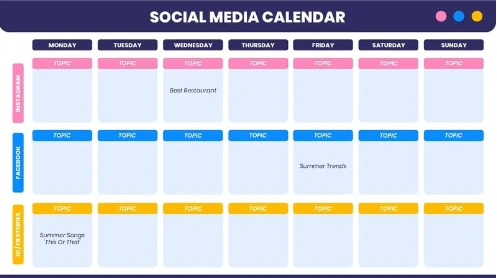
a. Creating a Content Calendar and Planning Distribution
Importance of a Content Calendar
A content calendar serves as a roadmap for your content marketing efforts.
It helps you stay organized, maintain consistency, and align your content creation with your marketing objectives.
By having a clear schedule, you can plan, brainstorm ideas, and ensure a steady flow of content.
Additionally, a content calendar enables you to track the performance of your content, identify gaps, and make necessary adjustments.
It helps you stay organized, maintain consistency, and align your content creation with your marketing objectives.
By having a clear schedule, you can plan, brainstorm ideas, and ensure a steady flow of content.
Additionally, a content calendar enables you to track the performance of your content, identify gaps, and make necessary adjustments.
Structuring and Organizing Content Creation
To create high-quality content consistently, it’s crucial to establish a structured content creation process.
Start by defining your content marketing objectives and target audience.
Conduct thorough research to identify topics and keywords that resonate with your audience and align with your brand messaging.
Next, outline your content pieces, breaking them into subheadings or sections.
This provides a clear structure and makes it easier for readers to navigate and comprehend your content.
Start by defining your content marketing objectives and target audience.
Conduct thorough research to identify topics and keywords that resonate with your audience and align with your brand messaging.
Next, outline your content pieces, breaking them into subheadings or sections.
This provides a clear structure and makes it easier for readers to navigate and comprehend your content.
Coordinating Distribution Across Channels
Once you’ve created valuable content, the next step is to distribute it across various channels to reach a wider audience.
Identify the channels where your target audience is most active, such as social media platforms, email newsletters, or industry-specific forums.
Tailor your content to suit each channel’s format and audience preferences.
Utilize the power of internal linking to enhance user experience and guide readers to related content within your website.
Identify the channels where your target audience is most active, such as social media platforms, email newsletters, or industry-specific forums.
Tailor your content to suit each channel’s format and audience preferences.
Utilize the power of internal linking to enhance user experience and guide readers to related content within your website.
Aligning Content with Seasonal or Industry-Specific Trends
To maximize the impact of your content, it’s essential to stay up-to-date with seasonal or industry-specific trends.
Research popular topics or events related to your industry and create content that aligns with these trends.
For example, If you’re in the fashion industry, you could create content around seasonal fashion trends or fashion shows.
By tapping into these trends, you can capture the attention of your target audience and position yourself as a relevant and timely source of information.
By implementing a well-structured content calendar, organizing your content creation process, coordinating distribution across channels, and aligning your content with trends, you can optimise your content marketing efforts for success.
Research popular topics or events related to your industry and create content that aligns with these trends.
For example, If you’re in the fashion industry, you could create content around seasonal fashion trends or fashion shows.
By tapping into these trends, you can capture the attention of your target audience and position yourself as a relevant and timely source of information.
By implementing a well-structured content calendar, organizing your content creation process, coordinating distribution across channels, and aligning your content with trends, you can optimise your content marketing efforts for success.
9. Promoting Content and Leveraging Social Media Platforms
Have you ever realised how much social media has changed the dynamics of marketing?
Well, billionaire Red Bull Founder Dietrich Mateschitz realised this back in October 2012.
So based on our common sense, we all know that Red Bull is a non-alcoholic product, not the tastiest drink in the world, and certainly not the healthiest drink in the world, right?
But do you know, out of all these odds they still manage to make a billion dollars every year?
Well, billionaire Red Bull Founder Dietrich Mateschitz realised this back in October 2012.
So based on our common sense, we all know that Red Bull is a non-alcoholic product, not the tastiest drink in the world, and certainly not the healthiest drink in the world, right?
But do you know, out of all these odds they still manage to make a billion dollars every year?

This is the game of social media which they triggered back on 14th October 2012 via their “Stratos Project.”

In this project, the Red Bull team thought to throw a man from the stratosphere and record the highest freefall jump ever.
Professional skydiver Felix Baumgartner was involved in this project.
The Red Bull team spent $65 million on this preparation and social media campaigns. People thought they went crazy.
But actually, this project got visibility of about 8 million Youtube livestream viewers, 52 million webcast views, and 3.2 million tweets.
Watch out for the video of Felix Baumgartner’s Space Jump World Record 2012 Full HD.
Professional skydiver Felix Baumgartner was involved in this project.
The Red Bull team spent $65 million on this preparation and social media campaigns. People thought they went crazy.
But actually, this project got visibility of about 8 million Youtube livestream viewers, 52 million webcast views, and 3.2 million tweets.
Watch out for the video of Felix Baumgartner’s Space Jump World Record 2012 Full HD.
They were breaking records on every social media platform and got great attention from news channels.
Result: they got a ton of PR, and sales rose by 7% within the next 6 months with a revenue of 1.6 billion dollars.
Famous author and inspirational marketing and customer service keynote speaker Jay Baer quotes “Content is fire. Social media is gasoline”
Result: they got a ton of PR, and sales rose by 7% within the next 6 months with a revenue of 1.6 billion dollars.
Famous author and inspirational marketing and customer service keynote speaker Jay Baer quotes “Content is fire. Social media is gasoline”
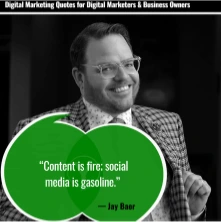
Over 50% of brand reputation comes from socialising, so social media marketing plays a big role in creating your brand awareness.
If your content is good enough then social media can take your business to an unexpected level of success.
Related article : GoPro: Red Bull Stratos – The Full Story
If your content is good enough then social media can take your business to an unexpected level of success.
Related article : GoPro: Red Bull Stratos – The Full Story
Conclusion
Crafting an unbeatable content marketing strategy is a dynamic and iterative process that requires careful planning, execution, and continuous optimization.
Remember to define your goals, research your target audience, create valuable and relevant content, leverage various distribution channels, measure your results, and adapt your strategy based on data-driven insights.
With a well-defined and meticulously executed content marketing strategy, you can effectively engage your audience, build brand authority, and drive sustainable growth for your business.
Embrace the power of a comprehensive content marketing strategy and witness the transformative impact it can have on your overall marketing efforts.
Start implementing these steps today and unleash the full potential of your content marketing strategy.
Remember to define your goals, research your target audience, create valuable and relevant content, leverage various distribution channels, measure your results, and adapt your strategy based on data-driven insights.
With a well-defined and meticulously executed content marketing strategy, you can effectively engage your audience, build brand authority, and drive sustainable growth for your business.
Embrace the power of a comprehensive content marketing strategy and witness the transformative impact it can have on your overall marketing efforts.
Start implementing these steps today and unleash the full potential of your content marketing strategy.




